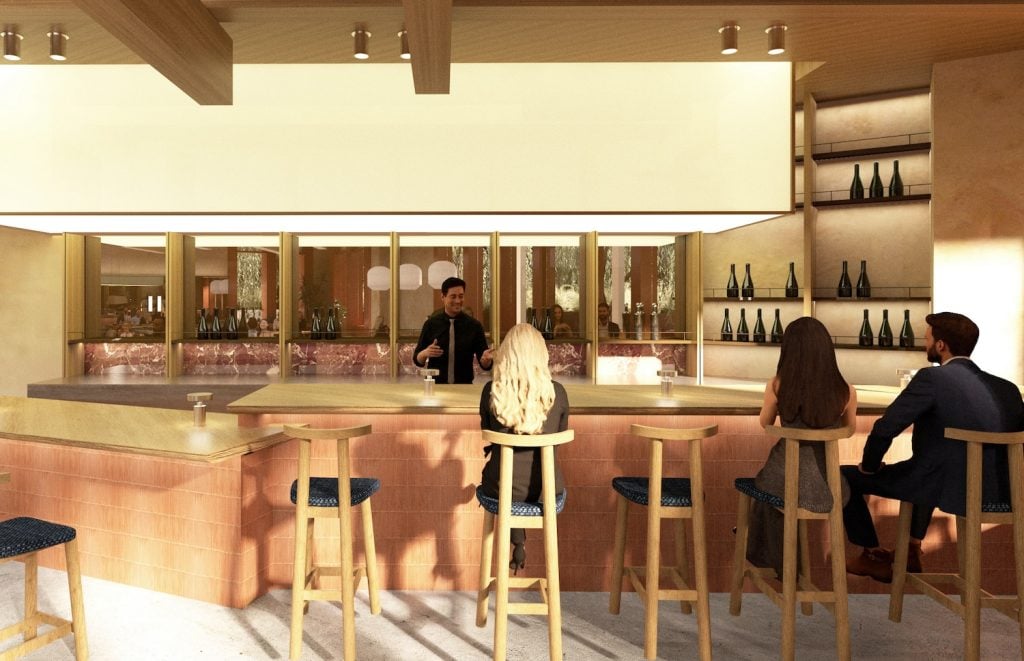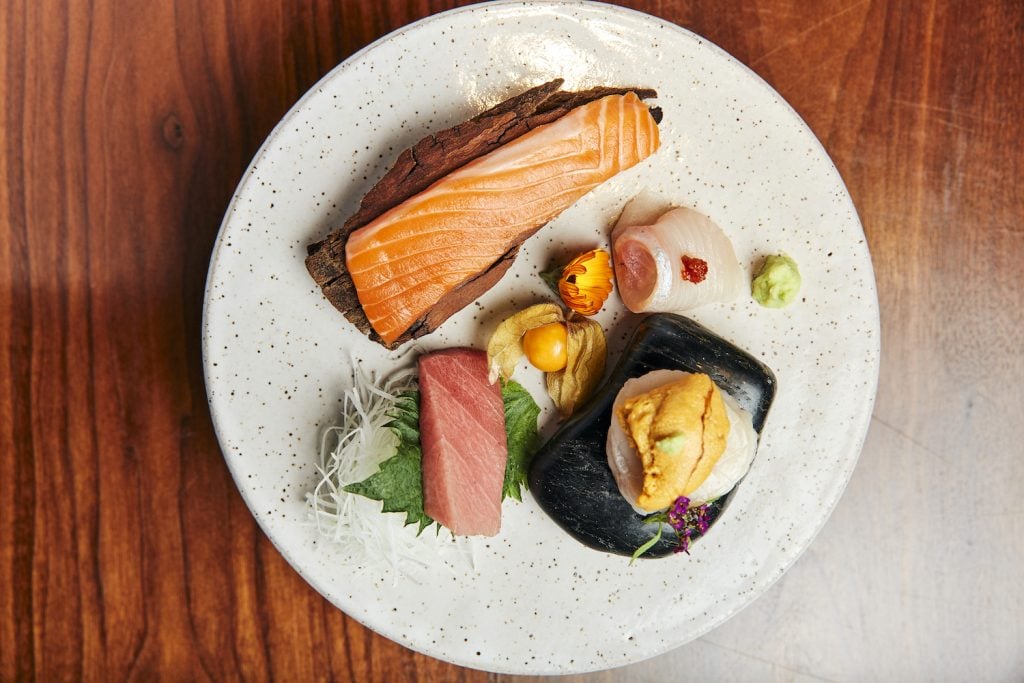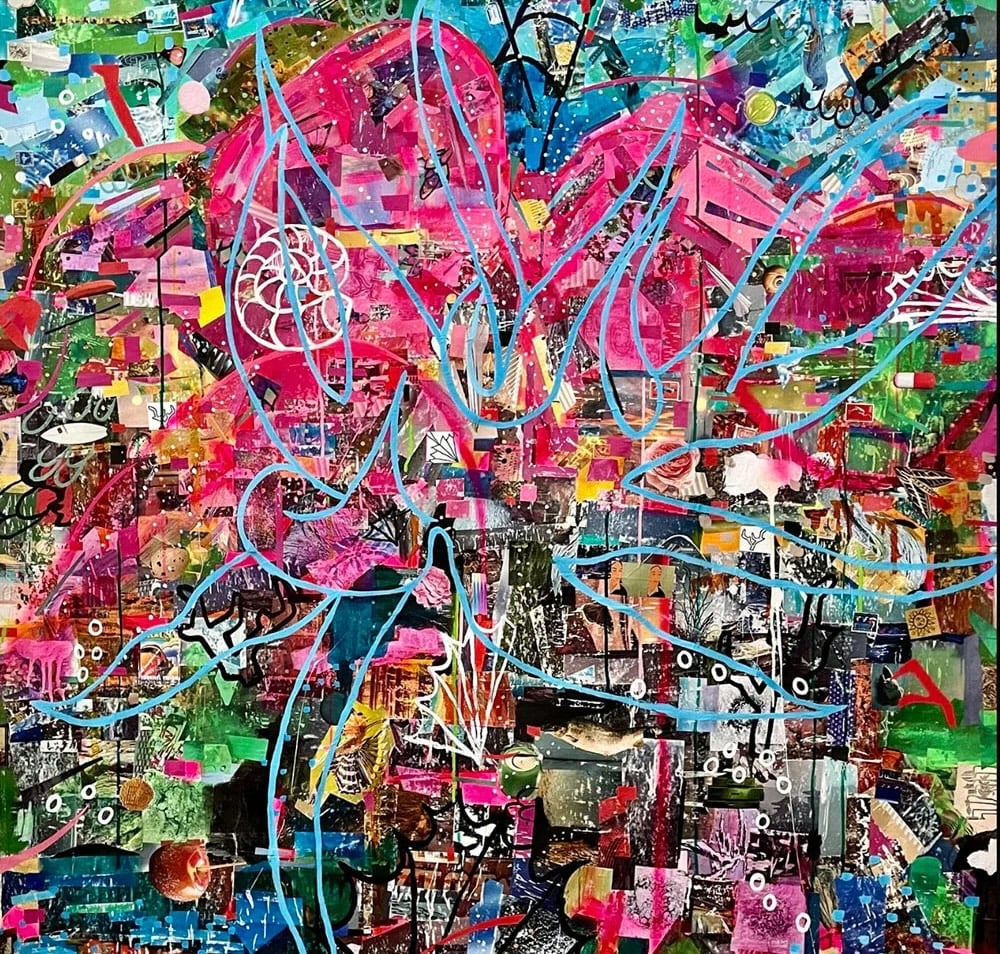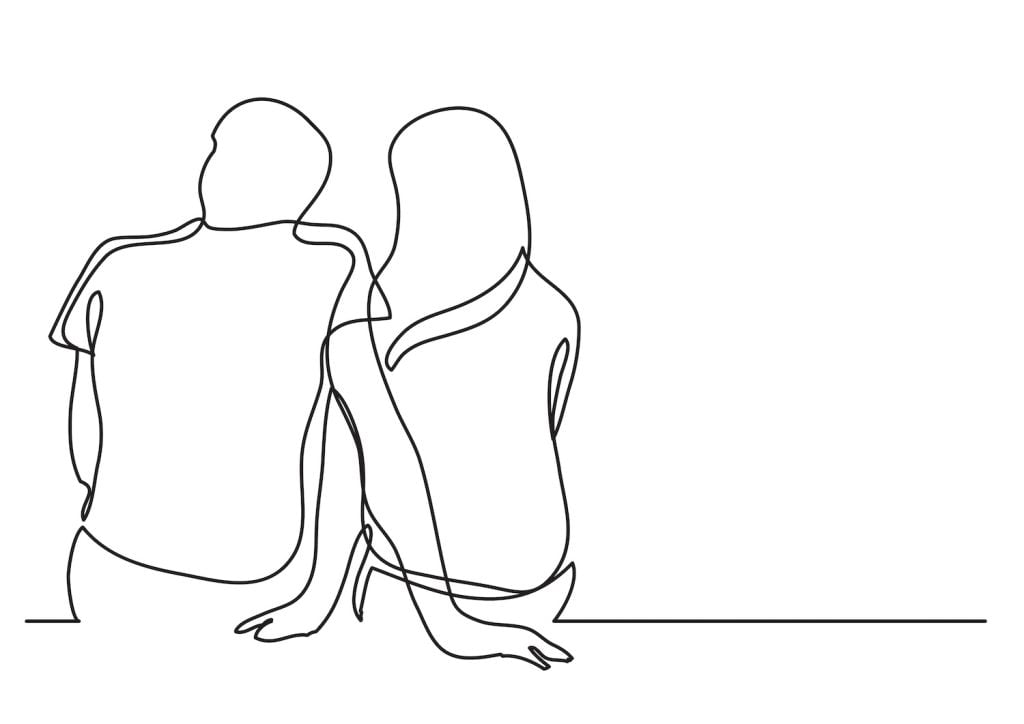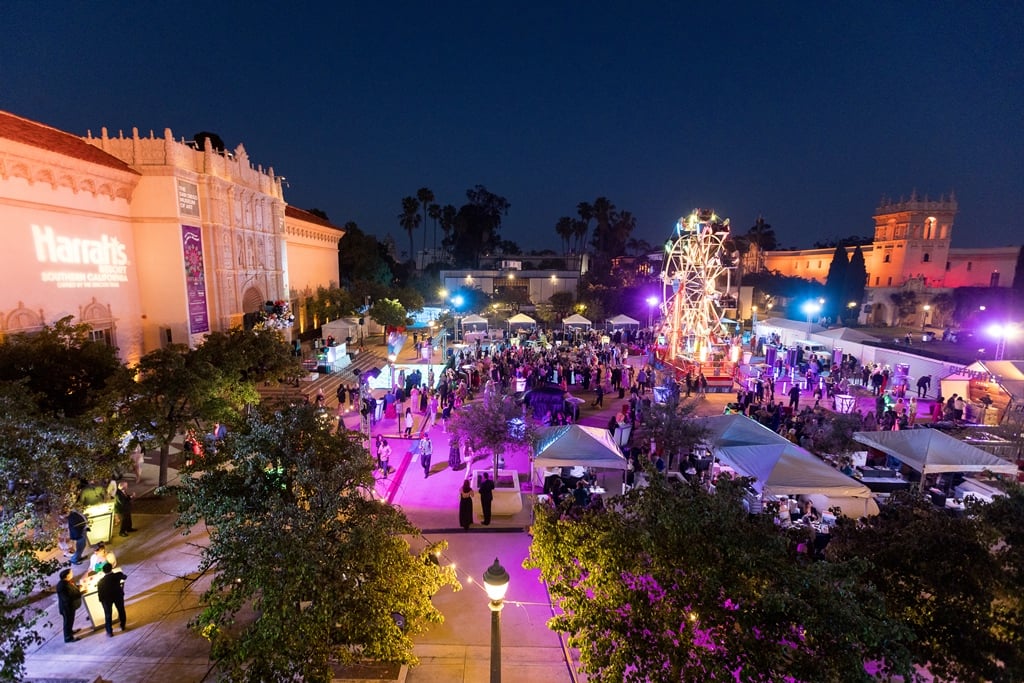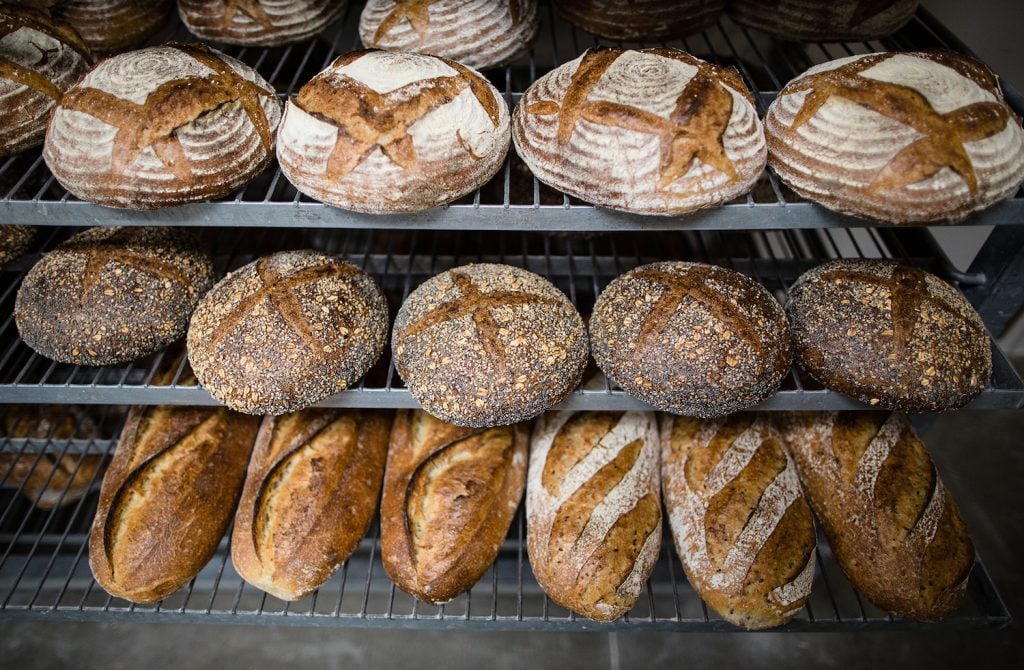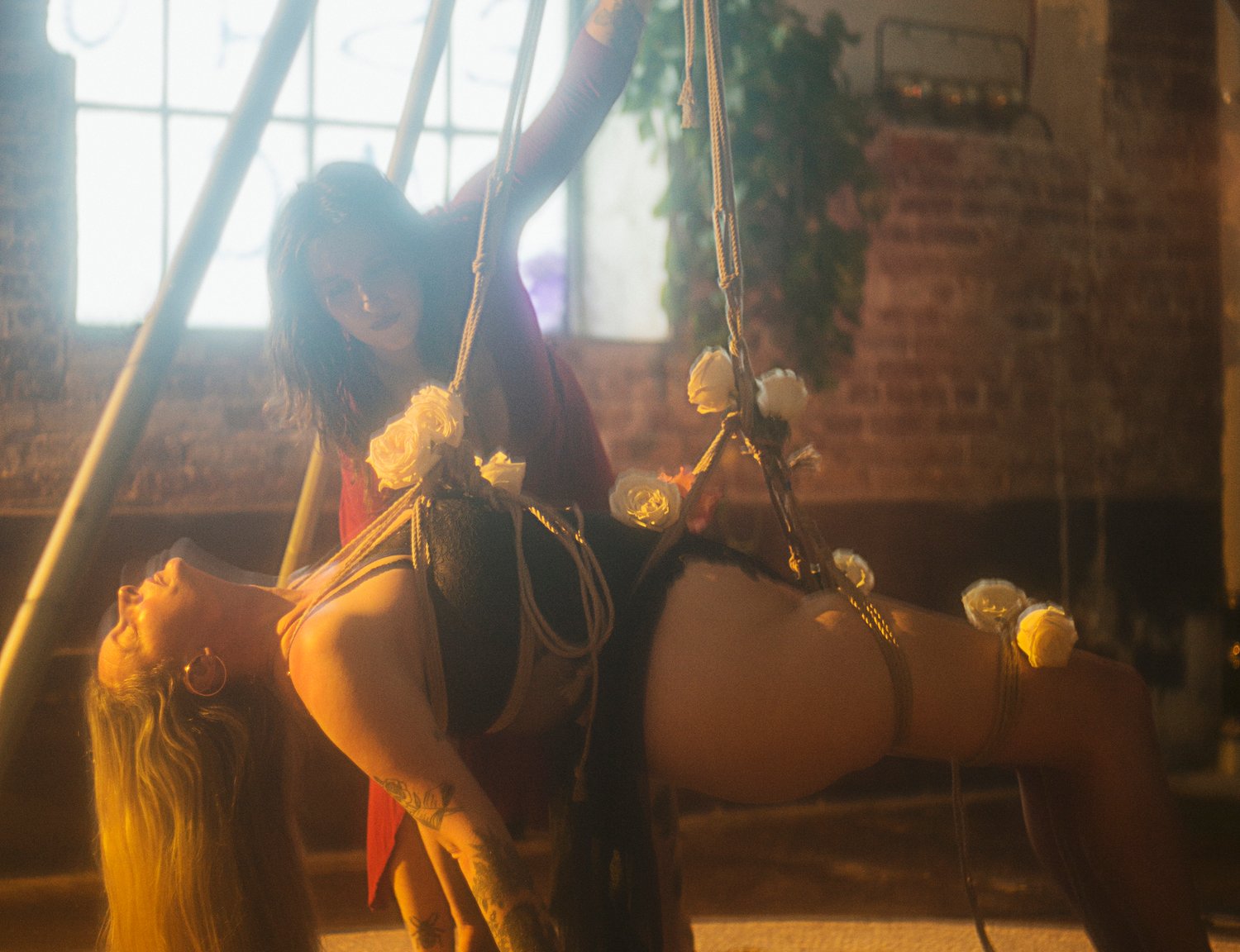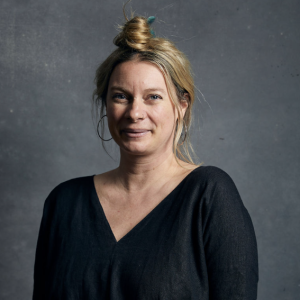“I really don’t feel like getting tied up today,” I message my co-workers. I’m tired. I have split-up my hair and I’m balancing my laptop on my c-section bulge. I had a baby six months ago, am recently back at work, and do not feel like getting into knots—figuratively, mentally, or physically.
But for the first time in years, I’ve got an appointment to practice shibari—a Japanese bondage practice using thin jute rope. Considered more artistic than other types of bondage and kink, it places a special emphasis on visual aesthetics, in addition to the connection between the person tying (called the “rigger”) and the person being tied.
Like many forms of kink, rope tying is used as a healing modality as well as a sexual outlet. It’s mixing the two that draws people in—what’s the line between pleasure and therapy? Marvin Gaye wondered correctly—and it’s what piqued my own curiosity after I watched it in a performance years ago.
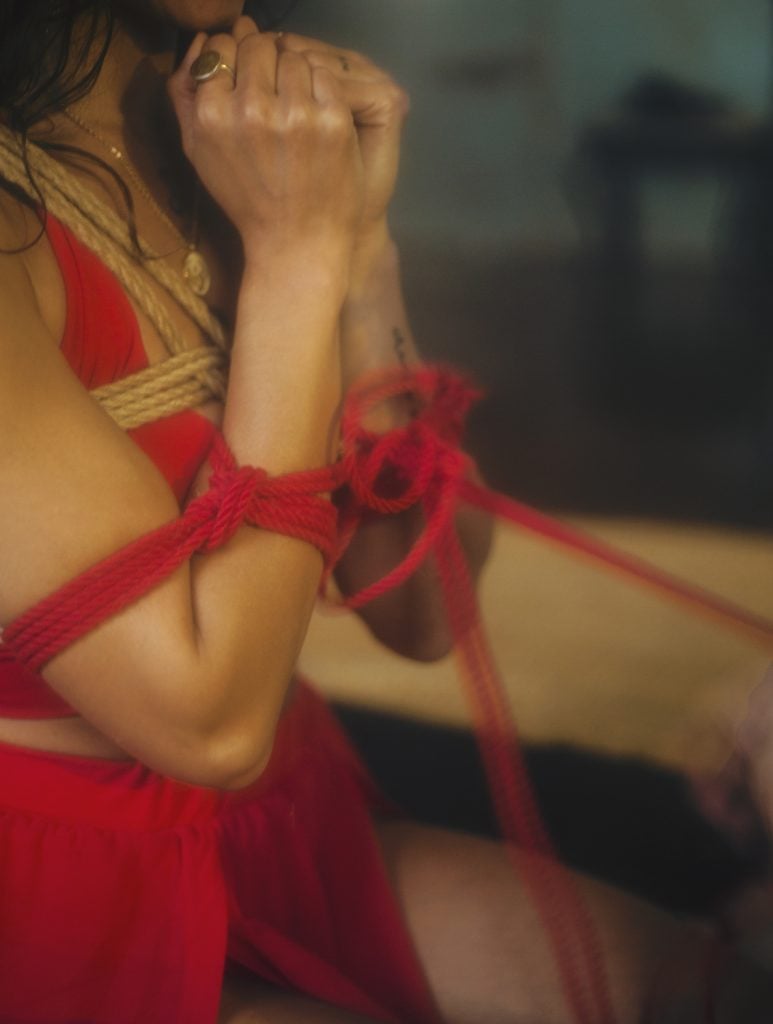
Luci Lampe settles into an intricate chest harness and wrist tie.
The women look incredibly beautiful, no matter their body type, I remember thinking during a particularly bleak period in my own body image. The rope harnesses and knots were arranged to pop their breasts and butts and accentuate the shapes of their bodies as they bent. Watching a woman spin while suspended like a Christmas ornament, I was mesmerized. I wanted in. It looked extreme, likely felt extreme, and was incredibly hot.
Several years later, I finally ended up in someone’s rope, and instantly understood why I was drawn to it beyond aesthetics. Being tied up intentionally forces you to become embodied. It snaps you out of disassociation— it’s impossible not to notice the rope digging into your skin. For some people, it might feel like a trap, something from which to escape.
For another type—that’s me—it’s almost like being strapped onto Aladdin’s carpet. With my body safe, snug, and secure, I’m free to take a ride through the clouds. I feel ensconced in a warm glow not unlike the fuzzy feeling people report after getting acupuncture.
Instantly, I felt confident. There was nothing overtly sexual between my rigger and I, though the experience was deeply intimate and caring. I was being suspended (considered more advanced) by my third tie, and I loved it.
Then life happened. I met my now-husband, we had a baby and got married, I took a magazine job. I stopped for a while. But now here I am in Barrio Logan at The Rope Collective, getting tied again by my original rigger: my friend Toni Wendel, a rope and performance artist and the collective’s founder. I told her I needed to get my groove back, so to speak, after a traumatic birth experience and a whole lot of disillusionment with my postpartum body. I wanted to be laced up like a holiday ham and hoisted into the air for all to see.
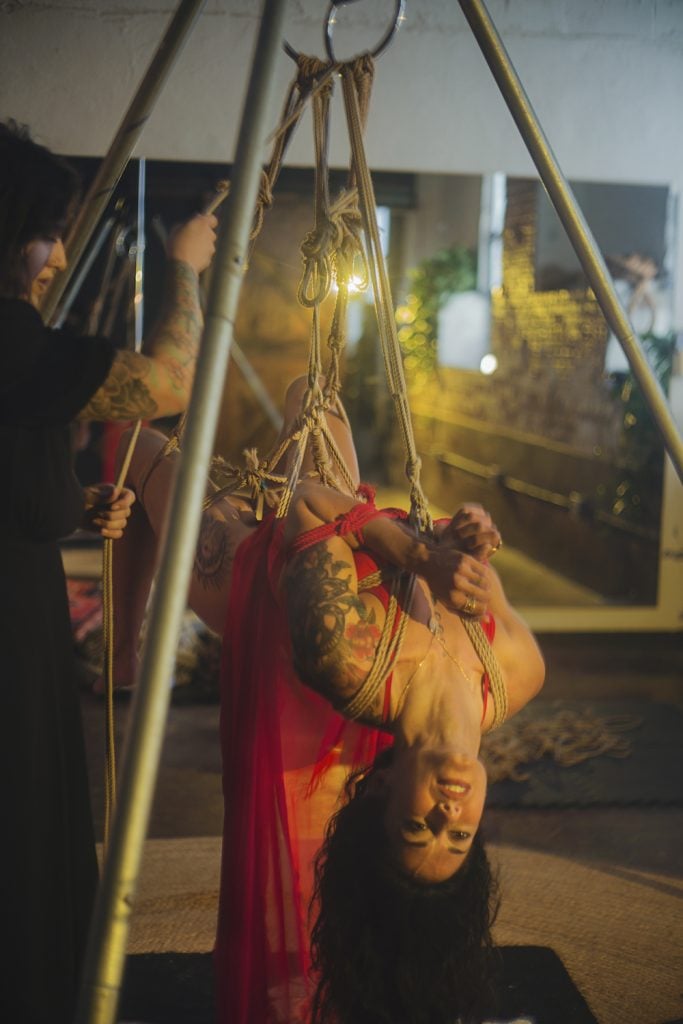
Toni Wendel guides Luci Lampe into an inverted suspension at The Rope Collective.
Longing to be tied is, I’ll soon learn, a completely normal reaction to having a baby. There are many other mothers in the collective, Wendel tells me, including some moms-to-be. Almost all of them talk about healing some kind of trauma through rope.
“Rope tying is a practice that, when done as ethically and safely as possible, is an incredible container and space that can facilitate healing,” Wendel says. She’s seen collective members develop informed-consent skills, honor and set boundaries, voice desires, and learn to care for themselves and others while processing challenges. There are also somatic benefits, since the practice demands we stay present in our bodies.
Whitney Gaston is one of those aforementioned mothers, new to the vocation like I am, who has sought refuge in her rope practice at the collective. “After having a baby, sometimes you don’t feel very connected to your body,” she says, while I nod knowingly.
“I [wanted] to explore what my body is now because I knew I would never be the same. And rope helped me do that,” Gaston explains. “I think the first time I was tied after having my baby was maybe when she was about two or three months old. And Toni suspended me, and I was up in the air, and [the baby] started crying. Toni picked her up and I was nursing her for a while. It was crazy, the most out-of-body experience.”
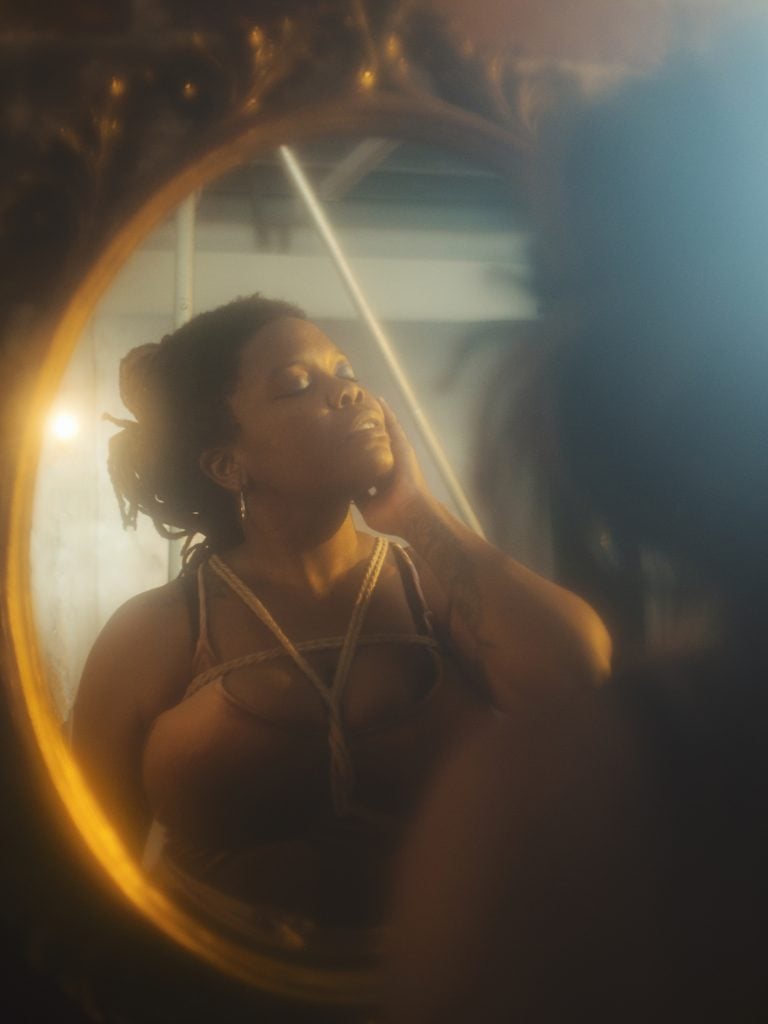
Whitney Gaston gazes at herself in a chest tie. She says that shibari helped her feel at home in her body again after having a baby last year.
Shibari has not always been the most easy, breezy experience, Gaston admits. As a Black woman, “I started diving into feelings of guilt or shame or fear, being in a predominantly white space … and being tied by a friend of mine who is white, and being like, ‘Whoa. Wait a minute, I didn’t think about this,’” she says. “And then I got triggered. I had to have a conversation with myself and [understand] that the things that I was feeling were valid. I fully trust Toni as a friend, so it’s easy for me to go there with her.” But Gaston hasn’t been tied by anyone else yet, and she admits that, if she were, it would “take a minute” for her to get used to it.
That element of safety drew Luci Lampe to The Rope Collective’s virtual programming during Covid. She tells me that movies had made her assume that bondage and other kink practices were something “pretty far out there.” But her first tie, she says, “was a beautiful healing experience of complete surrender in a context where I … had no fear of being taken advantage of or my boundaries crossed.”
At the studio and in its programming, discussing and negotiating consent, boundaries, and feelings are required at all steps of the tying scene. “Ethical rope practice often can feel safer than a less-structured practice because there is such an emphasis on these foundational skills,” Wendel says.
When communication and consent break down or are never present to begin with, that’s when the experience can turn dark. Devoid of dialogue, both parties are unaware what the other wants and needs—which can make things especially scary for the person who is bound. Plus, it’s not like it’s easy for even the most adventurous people to willingly offer themselves up to be physically restrained.
“These practices can feel triggering and threatening because, often, people have a negative association with being vulnerable and intimate with others,” Wendel says. “There is also a common misconception that gifting someone your control is a loss of control, which is why a lot of people may feel threatened by this practice.”
Wendel, however, has “found quite the opposite—that in gifting someone your power, there’s acknowledgement and evidence of its existence, which can be life-changing for those who have ever felt powerless.”
Lampe, a married mother of six who is a life and relationship coach, has found that sharing that power with her tying partner is invigorating in other ways, too. Rope tying is taboo in most circles, for starters, which can be exciting. For many, power dynamics are sexy and turn us on. Shibari can allow people to explore that buzz without engaging directly in sexual activity.
“It awakens the senses,” Lampe says. “Rope is a very sensual experience that’s not necessarily sexual. [It’s] also very erotic, which is also not exactly sexual. It opened up my mind to a lot of what was possible in [that] realm. It’s a beautiful way to deepen trust and connection.”
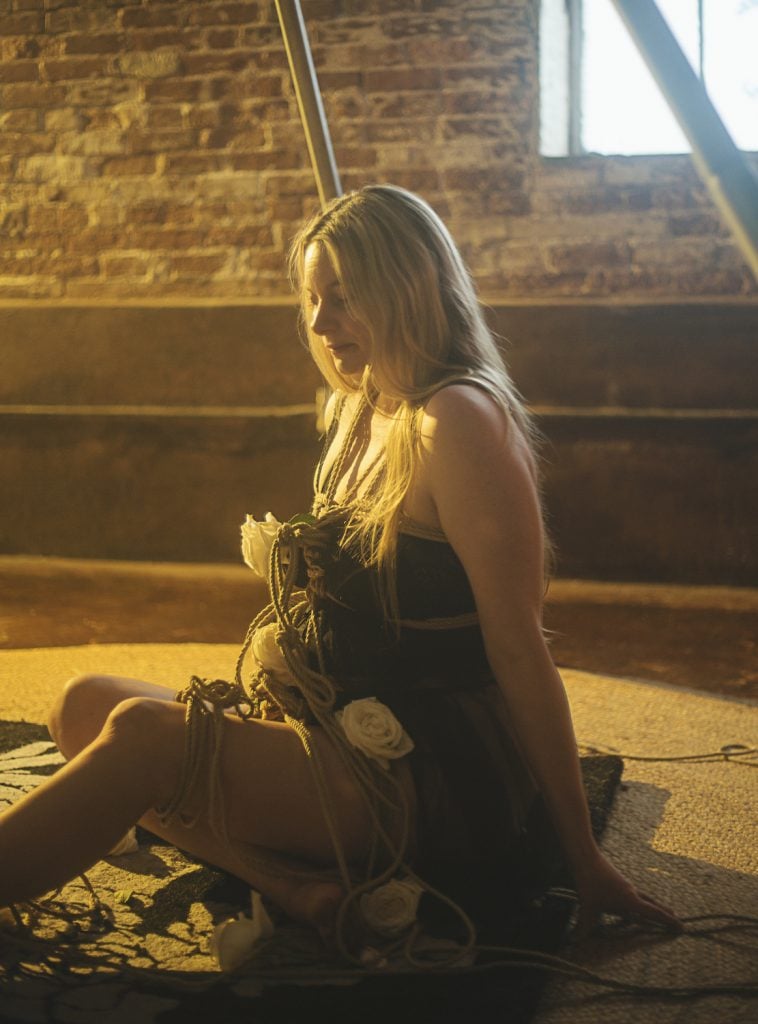
Bryant takes a moment after coming down from suspension. Once lowered, those who were tied usually experience a blood rush and some dizziness.
As I arch my back, I can feel the blood rushing from my feet and through my ravaged torso, finally pooling in my head, where my eyes are closed. My face and neck go flush. Toni asks me to point my toes, like a ballerina would, and as she steps back from me, I can feel my outstretched body spin, dangling from ropes affixed to poles over my head.
For a few minutes, all I can think about is the fact that I wore a high-cut lace teddy, which means my c-section bulge is exposed for all to see. SDM’s art director, who is all of the readers of this magazine at the other end of his lens. Wendel. Most horrific of all, I have to witness it, too.
At some point, my fingers wander up to just above my pubic mound, where the long, jagged, purple scar cuts across my body. It’s where my son entered this world. It’s still almost too surreal to believe, partially because I was in the midst of a full-blown panic attack while it was happening, throwing up in the nurse’s face while my husband clutched my hand, white-faced himself.
I remember feeling like I was not really there, so it’s hard to connect my body’s current state with that moment. I had always hated this area of my body, so it seemed a funny trick of the universe that it’d become even worse. But now that it is uglier, oddly, I struggle to care any longer. It is out, it is illuminated, and, truthfully, I no longer give a shit. What’s there left to worry about after all of that? I unclench and let my body fall even deeper into the rope. That glow simmers in my skin, and my whole body feels warm.
While I’m still spinning, inverted, I notice Toni has been slipping white flowers in the knots hugging various parts of my body. I realize I am really going to have to let all of this go—the ugly scar, the birth horror, yes, but particularly the disgust over my own body, this vessel that not only keeps me alive but created another life, too. I had taken that miracle for granted and gotten in my own head. This experience is objectively beautiful, and I am its centerpiece.
Ohhh, I think to myself, smiling with my eyes still closed, a white petal falling from one of the flowers onto my hand. This is like a funeral. Toni asks me if I wanted to be hoisted a little bit higher, and I say, “All the way up!”
